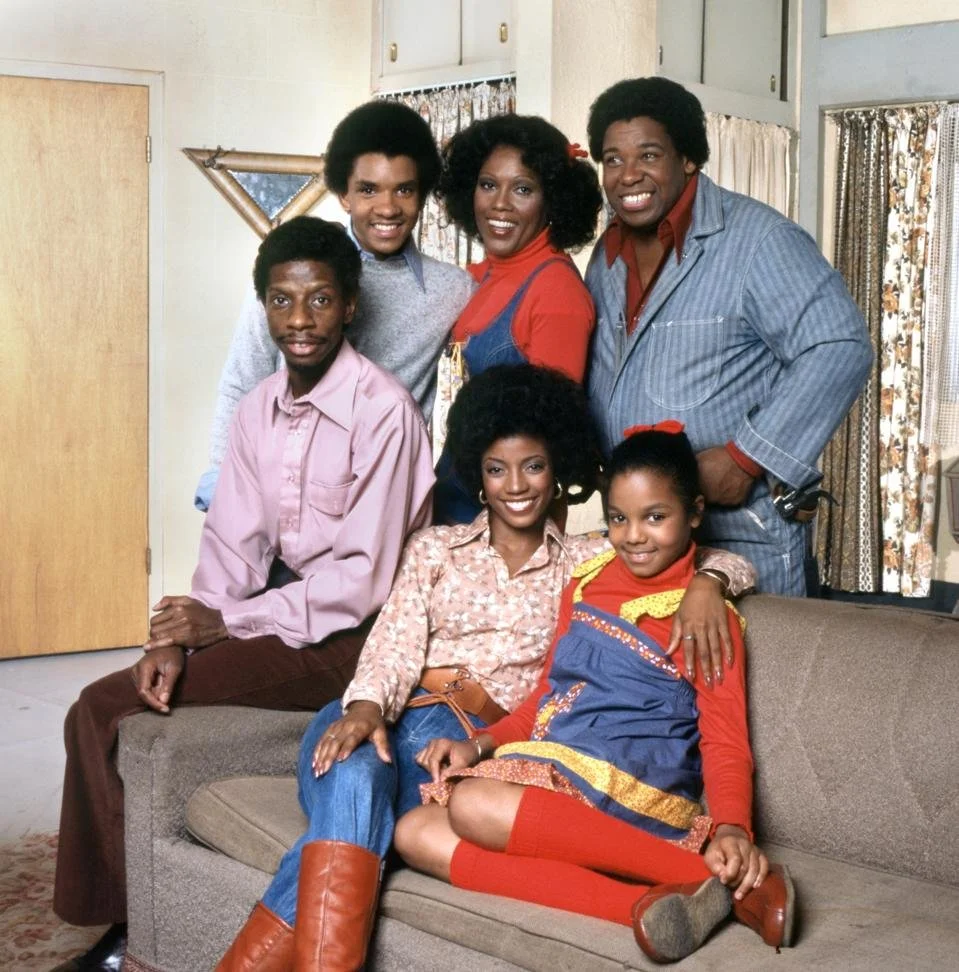“Good Times” – A Closer Look of Representation
Television in the later 1900s, specifically 1970, was a strong founder of representation. As the Civil Rights Movement highlighted the struggles of inequality and racial injustice, American television started to highlight Black families. A great example of this was the sitcom “Good Times” (from CBS, 1974-79), a story set in the Chicago housing projects. The show made history in featuring the first two-parent Black household, but the network had to balance storytelling with network requirements. By taking a closer look at “Good Times” as an artifact, I found that although the show helped the visibility of Black families/households, it also relied heavily on the reinforcement of racial and gender stereotypes.
“Good Times” premiered in Feb. 1974. The series followed alongside Florida and James Evans and their children JJ, Thelma and Michael. The show led us through how the family lived in the low-income Chicago projects. Florida, played by Esther Rolle, was casted as a strong womanly figure in the house while James, played by John Amos, showed grit, discipline and pride regardless of their poverty.
The way the show was produced is a key element in this paper: CBS and Norman Lear teamed up to bring more diversity to television. During this era of television, Black families were not seen on screen like today, especially in leading roles. According to online reviews, “Good Times” was very popular in its early seasons, from both white and Black audiences. Even with the ratings, critics as well as cast members raised an eyebrow at the stereotypes within the show, especially JJ. His catchphrase “Dy-no-mite!” made him look like a comedic relief character instead of a leading role and developmental character.
The show was groundbreaking in terms of representation but also showed many problematic instances. The media pushed a stereotype that the Evans family as a “broken Black family” in the 70s. Even with the togetherness of the family, the stereotypes persistently made their way more and more. JJ became constantly ridiculed- goofy, unserious and only a character for comedic relief.
This show also outlined how gender expectations were “supposed to be” in the 1970s. Florida was the perfect TV mother: caring, had a moral compass and was spiritual. Her aspirations were limited however, and most of her life revolved around keeping the family together while James was the disciplinary character. The daughter, Thelma, was seen for her beauty and her dating life, yet again, reinforcing gender norms for young women in this era.
“Good Times’ valued laughter over critique. Poverty was and still is very real, but it was more of a joke in this show than a real structural issue. Storylines relied on punchlines, which diminished the Evans family’s struggle to just plain entertainment. Although the show did explore the Black family, other Black cast members were rarely shown. Subconsciously, this highlighted the racial inequalities that persisted on-set.
A family-friend of mine, Marcus, who grew up in the low-income side New York in the 1970s shed some light on the time this show was on television.
“It was a time where I could look at the [screen] and say, ‘Hey, that looks like me!’” he said with a smile.
I asked him about JJ, and how he felt regarding how the show portrayed him.
“Most of the time, [the show] felt like it was mocking Black people. I loved JJ, but it felt like he was only there for white people to laugh at us.”
Marcus did a great job at explaining how these stereotypes fed into his daily life, especially living where he was. White people saw Black people as unequal because of their skin color, no matter what. He also commended Florida’s strength in the show, and how it drew similarities to his own life.
“My mom and grandma held the house on their shoulders, while the men worked or weren’t even there.”
His memory of the show was very positive overall. He acknowledged and definitely gave examples of the stereotypes but stressed the importance of representation.
“Good Times mattered, even if it wasn’t all perfect.” Marcus stated.
“Good Times” shows key concepts we learn about in this class. We see how CBS and Lear presented poverty as a “funny” issue rather than systematic injustice. The show shines light on marginalized groups, all-the-while restricting them with continual stereotypes.
The show also touches on symbolic annihilation, something that shows underrepresentation of a group of people in the media. While the Evans family existed on television, they represented only one part of Black America socioeconomically. Middle-class Black families were later shown on “The Cosby Show” in the 1980s. “Good Times” made progress by showing a loving and together Black family in America for the first time in television history.
My personal analysis of “Good Times” reveals how television in this time advanced and deprived representation in the 1970s. The show gave millions of viewers a taste of Black family life, but reliance of stereotypes stopped the possibility of digging deeper into injustice. My talk with Marcus truly confirmed that while audiences did recognize this issue (especially minorities), the presence of a Black family was seen as a win in their hands. “Good Times” was a breakthrough and a limitation, showing the continuous struggle for true representation in media.
